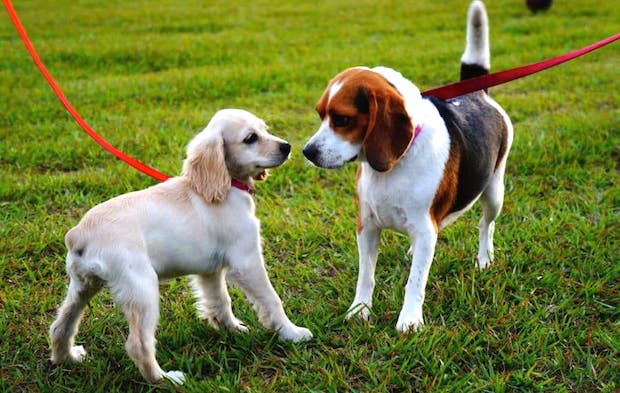Tips For Socializing Your New Pet

Socializing, for humans and for pets, requires certain skills and a certain comfort level in a variety of different conditions. These skills are important for dogs, so that they understand the rules and can feel confident in any environment where there are other people and even other dogs. Helping your pet to feel safe and comfortable in a variety of setting makes sure they are a welcome addition to any situation.
What Is Meant By Socializing Your Pet
“Socialization” may seem like a strange concept to use in regard to an animal. But pets must necessarily encounter a wide variety of experiences when living with their human companions. Getting your pet accustomed to unusual sounds, smells, surfaces and pacing will allow you to take your pet anywhere and be confident that they will be able to behave properly.
Why Is Socialization So Important?
Dogs that are well socialized can be trusted to follow the rules and manage their reactions. They will not become frightened and run off, which could expose them to danger. In addition, a dog that is socialized in a variety of environments and with many types of animals can be relied on not to panic and bite, which increases safety for others.
Puppies Need Socialization in the Early Stages
Puppies are naturally bouncy, excitable and easily distracted. When socializing young animals, keep them on leash in the beginning and encourage good behavior with treats and plenty of praise. If the puppy becomes fearful, remove them from the situation. Keep training sessions short and positive. Start with simple changes in environment, like more people walking or children playing. Then, gradually work up to a visit to the dog park. As your puppy becomes more confident, try an urban environment with more sounds and activity.
Rescued Animals May Need Special Time and Attention
An older dog that has been adopted from a shelter may not have received proper training in their early years and may be skittish and intimidated by new situations. These animals need additional time and encouragement to feel comfortable in new environments. When introducing your adopted pet to new situations, bring treats, talk in a calm, encouraging manner and be ready to leave if the animal becomes overstimulated. Frequent, short training, relaxed sessions will have more success than lengthy, stressful ones.
Tips For Socializing Pets
These tips can help you to successfully socialize your pet at any age:
- Begin socializing your pet at an early age, if possible. Older animals may require more time and patience to learn to feel comfortable in different situations.
- In the beginning, always keep socialization sessions short to avoid overwhelming the animal.
- Make sure your pet is vaccinated to prevent acquiring common diseases that are transmitted between animals. If your dog is sick or under treatment, wait until they are healthy and able to manage unfamiliar environments.
- Encourage interaction with people and other animals and praise for good behavior.
- Pay attention to your pet’s reactions. If they show signs of fear or discomfort, remove them from the environment and try again another time. Allowing the animal to watch from a distance for a period of time can help to increase comfort levels.
- Because animals often pick up the mood of their owners, maintain a calm, positive attitude during training.
- When walking on leash, allow your dog to meet other dogs. Separate the animals from the situation if he or she becomes tense or feels threatened.
- Vary the environments your dog experiences, with different surfaces underfoot, different sounds and different objects nearby, such as bicycles, skateboards, strollers and cars.
- Continue socialization efforts throughout your pet’s life to keep them mentally active and confident in public.
Safely introducing your pet to a range of different people, environments and conditions allows him or her to rely on their training to navigate unfamiliar situations and enjoy new experiences. As a result, you and your dog can share many stimulating activities together.






